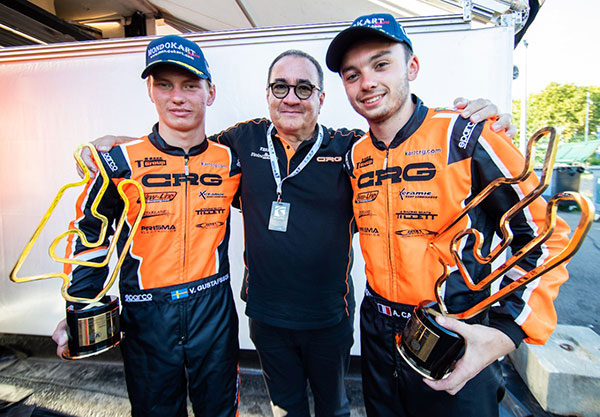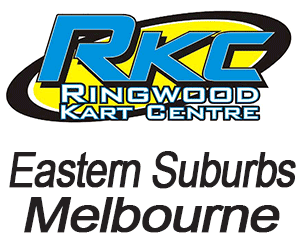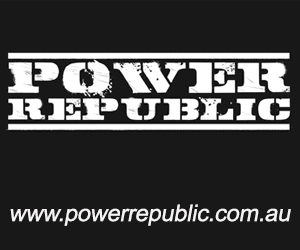As per tradition, CRG’s Giancarlo Tinini has issued his end-of-year annual interview, covering technical, commercial and racing issues around the CRG brand, plus challenges, costs and complications facing the industry.

The first topic we would like to talk about is the balance of the positive season of the CRG Racing Team internationally, of course:
“The KZ FIA World Championship and the KZ2 World Cup weekend in Le Mans gave us two clear successes, the result of the excellent work of our technical sector carried out in the development of the chassis, thanks to our drivers and our technical partners, among whom I would like to make a special mention of our engineer Gianfranco Galiffa and his staff, with whom we have shared these important international titles. Obviously these successes, in addition to bringing prestige to our brand, are also an excellent commercial driving force for the KZ chassis range. For what concerns the sporting results, we are also very satisfied with our performance in the OK and OK Junior direct drive categories, in which our chassis proved to be competitive on all types of tarcks and conditions. Here as well, I would like to thank our engine partners who have done an excellent job alongside us: for the Senior category Nicola Boscaini, who supplied us with the Iame engines and for the Junior Jiri Machac for the TM engines”.
Talking about the CRG Racing sector, can you briefly introduce us your chassis range?:
“Generally speaking, we have two chassis models that are our reference: the Road Rebel, made with 32mm tubes for the KZ classes and the KT2, all with 30mm tubes, which we have used successfully, both in the shifter and direct drive categories. Both of these models have been the most used by our Racing Team, which has contributed to the development of some updates available today on the standard models marketed through our distribution network. Alongside these two models, the CRG range of FIA homologated chassis is completed with the KT4, made with 30 and 32mm tubes and the KT5 chassis, presented at the beginning of the year, made with 30mm tubes (except for the front end which is 32mm). Also among the approved chassis we also have two specific and very competitive products for the Mini kart market: the Black Mirror and the Hero model, which differ in the geometry of the body in the front part. Basically our production is able to satisfy every type of need of our customers based on the type of category and track”.
What goals do you set for 2023 in sporting and commercial terms?
“From a sporting point of view we will try to keep ourselves at the top in the KZ categories, where we will be presenting a team almost entirely confirmed and with the addition of some new drivers. The goal will be to keep the development of our products constant and achieve significant sporting results in FIA meetings. Talking about sporting results, we also aim to materialize in the OK and OK Junior classes, where we have been missing a prestigious international success for some seasons, just as we are implementing our technical structure for the Mini kart, which represents an important market segment, where our chassis have achieved dozens of successes at a national level and where we want to impose ourselves more markedly also in the WSK races which, currently, are the most important container for direct comparison with our competitors and visibility for this category. As usual, we will provide the sports programs and the complete drivers line up on the eve of the first 2023 races at the beginning of February.
Regarding the production, however, we will continue to maintain the very high quality of our products, a prerogative that cannot be taken for granted in these phases of market recession, as well as assisting our resellers in various projects in national markets. In this regard, for example, we have just inaugurated the launch of Jorge Pescador’s new Kalì Kart team in Spain.
Among the reference projects at a commercial level for 2023 there is also the reorganization of our presence on the US market, after the two years of the pandemic had forced us to reduce support to CRG Nordam.
Speaking of production, it worth saying that CRG has been in business in all market segments, from Racing to Rental Karts, up to promotional models and for each specific segment we have various initiatives in place to best meet the needs of our customers”.
Referring to National markets, 2022 was a year full of sporting successes for CRG:
“Every year there are dozens of national titles that our chassis obtain with the local teams of our importers and these successes are as important as the international ones for us, because they demonstrate how our products are competitive and of quality in the most important markets. Obviously part of the credit for these statements also goes to the professionalism of our network of external teams with whom we work in close synergy. The thing we are pleased to underline is that the successes obtained in the individual national markets and in the main single-brand Trophies are transversal in all categories, from KZ where our winning tradition is very consolidated, up to the direct drive and Mini kart classes”.
What is your opinion on the new OK-N engines introduced by the FIA to relaunch and support national and basic karting?
“From a technical point of view, these engines are born on good foundations and I believe that they may be able to satisfy the objectives of cost containment that they set themselves, guaranteeing reliability and interesting performance. The real challenge will be to guarantee these categories economic containers from every point of view by the way, for example by limiting travel days, race registration costs, the number of tyres to be used and everything that negatively affects the overall costs of a race weekend. These aspects will have to be regulated, controlled and managed by the individual ASNs, with the aim of supporting the promotional objectives of these categories. Having said that, it seems that these engines have aroused good interest both from the manufacturers, from the teams and from the drivers and I believe that they all have the potential to bring benefits to our environment”.
Moving on to the production front, how is CRG dealing with the problems related to energy and raw material costs?
“It is a theme that is weighing heavily on the entire karting production sector and our company has tried, as far as possible, to absorb and limit the economic repercussions on the sales price lists, in order not to excessively penalize a market that is already suffering financially. In the medium term, on the other hand, we are implementing our alternative energy sources, above all looking to the future and we are constantly trying to improve and optimize each production process, without however neglecting the quality of our products which must remain a CRG hallmark”.
CRG is also among the most active brands in the Rental Kart market. What balance can you make of this market segment?
“For years, the Rental sector has been a very important segment for us and where we maintain a considerable market share and a very complete range of products. Those who choose CRG for their fleet of Rental Karts know they can count on the production quality of our company and on products that are therefore very reliable from all points of view, as well as attention to detail and the design. Furthermore, we are structured with a team of consultants able to offer excellent customer service, supporting them with personalized consultancy, both for the opening of a new track and for implementing the effectiveness of those already operational facilities. We also have a presence in the Rental market with various events, such as our 24 Hours Karting or other Contests where we are technical partners and this type of activity allows us to have constant positive feedback on the driving experience that our Rental Karts offer, a very rewarding prerogative because it is a priority objective for us. These events also allow us to keep constant the development of our products”.
CRG is also present in the promotional segment with the Briggs & Stratton project; if you had to take stock of this initiative, what would it be?
“First of all, it is worth saying that the Briggs & Stratton categories of our Championship perhaps represent the only real opportunity to practice low cost karting and this possibility did not exist in Europe, except through the Rental kart events. With our project, on the other hand, many enthusiasts have been able to buy their first kart and also take part in a Championship organized with excellent standards, where the races are very fun and competitive. So regardless of commercial data, this project is important for us to guarantee this opportunity in a market where the gap between Rental karts and national 2-stroke categories is too big. That said, the numbers are growing steadily as is the interest in this project. We will therefore continue to support it and among the objectives for 2023 there will certainly be that of increasing attendance in the youth categories, after having achieved very satisfactory numbers in the Senior classes.”
Finally, we would like to ask for an opinion on the current state of health of karting and on what initiatives could be useful for the future of this sport:
“Like a “broken record” we continue to support the need to reduce the racing costs on the one hand and, at the same time, to also reduce the number of international races to ensure more space for the National Championships. But if on the one hand we all agree in theory, manufacturers, teams, sector operators, on the other one essentially nothing is being done on these fronts. As already mentioned above, from a technical point of view, we consider the introduction of the new OK-N engines for the National Championships to be a positive operation and we hope that it will achieve widespread success in the National markets, where we need to rebuild a practitioner base, which, in recent years, has reduced considerably and has concentrated on single-brand Trophies”.


